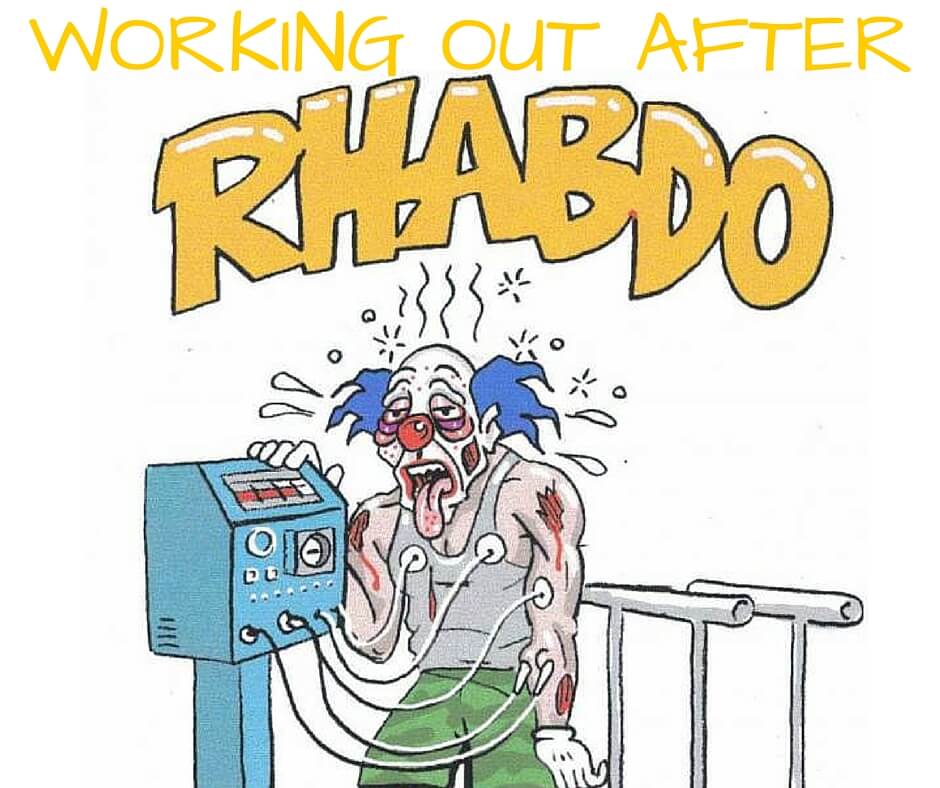Rhabdomyolysis is a rare medical condition that can result from intense physical exercise. When “rhabdo” occurs, severe muscle damage leads to the release of skeletal muscle contents into the plasma and can lead to serious medical problems, including death. While many fitness certifications address the need to screen for rhabdo, little information is available on getting back to CrossFit and other workouts after rhabdo, which we will discuss.
Identifying Acute Exertional Rhabdo
The most common signs of rhabdo include severe muscle soreness (very often bilateral), loss of active range of motion, muscle swelling, and darkening of the urine. Clinical note: I’ve seen this twice in the last month, neither of which had urine changes. This soreness often follows an intense workout with lots of eccentric muscle contractions. High volume pull-up workouts are commonly to blame with this (4 of the five patients I’ve seen performed >100 pull-ups in a workout).
If rhabdo is suspected, the athlete should immediately be referred to an appropriate medical provider. As exercise-induced rhabdo is not a common injury, I prefer to send the patient to a medical doctor with a note saying that I am concerned about the potential for acute exertion rhabdo as I’ve heard stories of multiple unnecessary tests being performed before the doctor ordered measurements of CPK levels to specifically test for rhabdo.
Working Out After Rhabdo
Brudvig and Fitzgerald published the following progression for working out after rhabdo. It provides some guidance into returning to exercise after rhabdo. I will outline their points and then underneath share how I would have someone return after rhabdo resulting from excessive pull-ups with bilateral bicep involvement (what I’ve most commonly seen).
PHASE ONE:
1 to 3 weeks after diagnosis, CPK levels should be normalized, and basic passive and active range of motion can be started in the affected muscles. This should be below the anaerobic threshold.
- All we are doing here is very light bicep stretching and active range of motion (bicep curls without weight) until we restore full active motion.
PHASE TWO:
Once full active motion is restored, the athlete can begin low-intensity aerobic activity such as cycling with the upper or lower body (depending on muscles affected). The intensity of ~25W is suggested beginning with 5 minutes of activity and progressed to 15 minutes. Once the athlete can perform 15 minutes of activity without soreness, they can progress to phase three.
- Next, we get on a rower with the damper set very low. Day one, we are rowing for five minutes (unless discomfort begins before that). We will then slowly increase the amount of time & resistance performed until we are up to 15 minutes at a light pace without any soreness or discomfort.
PHASE THREE:
Isotonic strength training for specific muscle affected. These exercises will often have to be altered as the affected muscles will be weakened significantly. Once the athlete can perform the full movement, the volume is limited to one set per 24 hour period. Muscle soreness is closely monitored as the patient slowly resumes full activity.
- Now we start some lightweight, low volume isolation work (bicep curls with DBs or another loading)
- We will adjust based on patient response. We can increase the load on isolation exercises and begin adding in compound movements as well. Lots of education is needed for the athlete as they will be significantly weaker following rhabdo. Athletes must be aware of that with their programming.






